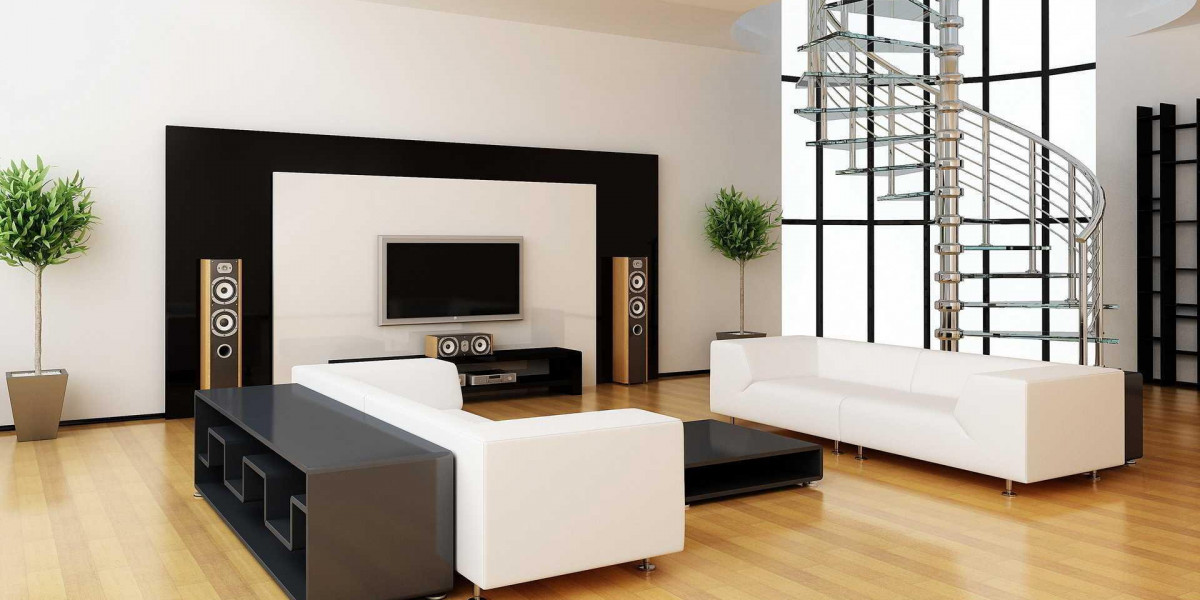Interior design transforms a space into something more than just four walls—it creates an environment that reflects personality, purpose, and comfort. Whether you’re refreshing your living room, designing a new space for work, or simply searching for ways to make your home more stylish and cozy, understanding the basics of interior design can be a complete game-changer.
This post dives deep into key concepts of interior design, highlighting strategies and practical tips while sprinkling in expert insights. Along the way, we’ll also explore specific aspects such as home interior design and contemporary interior design, offering valuable takeaways to help you elevate your space.
What Is Home Interior Design?
Home Interior Design focuses on creating functional, comfortable, and stylish residential spaces. It blends aesthetics with utility, ensuring your home serves your needs while representing your unique style. Whether you are reimagining your bedroom or bringing modern elements into your kitchen, home interior design ensures that each room works harmoniously within the overall space.
Tips for Home Interior Design:
- Define Your Style: Are you drawn to minimalist decor, modern glam, or rustic vibes? Knowing your style helps maintain consistency throughout your home.
- Focus on Functionality: Every design decision should serve a purpose. Think about how you’ll use each space daily.
- Create Focal Points: Use standout pieces like a bold couch, an eye-catching artwork, or accent walls as visual anchors for your room.
- Think about Comfort: From lighting to furniture, every element should boost your physical and emotional comfort.
By applying these principles and mixing in personal touches, your home interior will be as striking as it is practical.
The Core Principles of Good Interior Design
Before applying any style or trend, it’s essential to understand the core principles of effective interior design. Without these guiding elements, even the most expensive decor decisions can fall flat.
1. Balance
Balance is all about evening out the visual weight within a space. A room with balanced furniture and decor feels cohesive, not cluttered or sparse. There are three types:
- Symmetrical Balance often works in traditional spaces and reflects mirroring layouts.
- Asymmetrical Balance is used in modern or eclectic interiors for a more dynamic look.
- Radial Balance is based on central focal points, such as a dining table or chandelier.
2. Scale and Proportion
Scale ensures that furniture and decor are the right size for the room, while proportion ensures that these elements look cohesive and intentional when placed together.
3. Rhythm
Like a visual heartbeat, rhythm includes repeating patterns, alternating shapes, or even introducing contrasting elements that integrate the look as a whole.
4. Unity and Harmony
Good design ties in all elements—texture, color, shape, etc.—so nothing feels out of place. When you achieve unity, there’s a flow through the space that feels effortless.
Why Contemporary Interior Design Is a Game-Changer
Contemporary interior design captures the spirit of "what's now" and evolves based on present trends. It emphasizes simplicity, clean lines, and a clutter-free space while allowing play with textures, natural light, and neutral colors.
Hallmarks of Contemporary Design:
- Focus on Clean Lines: Whether vertical or horizontal, sleek lines dominate contemporary homes while minimizing unnecessary complexities.
- Natural Materials: Wood, stone, leather, and eco-friendly materials are commonly featured.
- Limited Color Palette: Neutral tones like grays, creams, and beiges are often paired with subtle accent colors.
- Reflective Elements: Glass, steel, and mirrors lend a polished and modern touch.
- Airy Layouts: Open spaces are key, blending functionality with minimalist aesthetics.
By adopting a contemporary interior design approach, you can craft a timeless look that resonates with modern sensibilities.
Interior Design Trends for 2024
To keep your space dynamic and up-to-date, consider incorporating some of the emerging trends in interior design. These trends focus on sustainability, technology, and creating personal, multifunctional spaces.
- Biophilic Design
Biophilic design integrates natural elements like wood, stone, and greenery into decor. Adding indoor plants or wood furniture isn’t just trendy; it improves mental health and air quality.
- Technology Meets Design
Smart home tech, such as integrated lighting systems and automated blinds, is becoming a staple in modern spaces. These elements enhance aesthetics while boosting functional convenience.
- Soft Curves
From rounded furniture to curvy decor, organic shapes are replacing rigid structures. A curved sofa or circular ottoman introduces softness while creating a comforting vibe.
- Warm Minimalism
Clutter-free isn’t cold anymore. This trend layers natural textures and muted tones to create serene yet warm interiors.
Designing with Purpose
Whether rethinking your home office, creating a modern living room, or upgrading a workspace, interior design revolves around purpose. It's essential to align your updates to the functionality needed for a specific room.
Living Rooms: Choose cozy seating and create conversational layouts.
Kitchen: Invest in task lighting and maximize storage without sacrificing design.
Bedroom: Neutral tones and layered bedding create a relaxing sanctuary.
The Importance of Interior Designers
While it’s tempting to DIY your decor, hiring an interior designer can ensure your vision comes to life effortlessly. Designers offer expertise, bring creative ideas to the table, and connect you with resources you may not know exist. They can also manage your budget and project timeline effectively.
Whether you’re a lover of bold statements or simple design, working with a professional brings immense value to the table.
Combining Styles for Personalization
Not every design approach has to stick rigidly to one theme. Combining styles—such as pairing contemporary furniture with vintage decor—introduces an eclectic stroke customized to your personality. Make use of contrasting textures, patterns, and even cultural inspirations to craft a unique look.
(A seamless blend of styles can elevate your home and make a design statement visitors will remember.)
Where to Begin
Interior design can feel overwhelming, but breaking it into manageable steps makes it easier. Start by decluttering your space to understand its full potential. With this blank slate, focus on incrementally adding elements that match your desired style and reflect your tastes.
Designing a Better You
Interior Design isn’t just about aesthetics—it’s about creating spaces that inspire and nurture your lifestyle. A well-designed space boosts productivity, improves well-being, and makes everyday moments more special. Remember that good design doesn’t require massive efforts or budgets—small, mindful changes often have the most significant impact.








